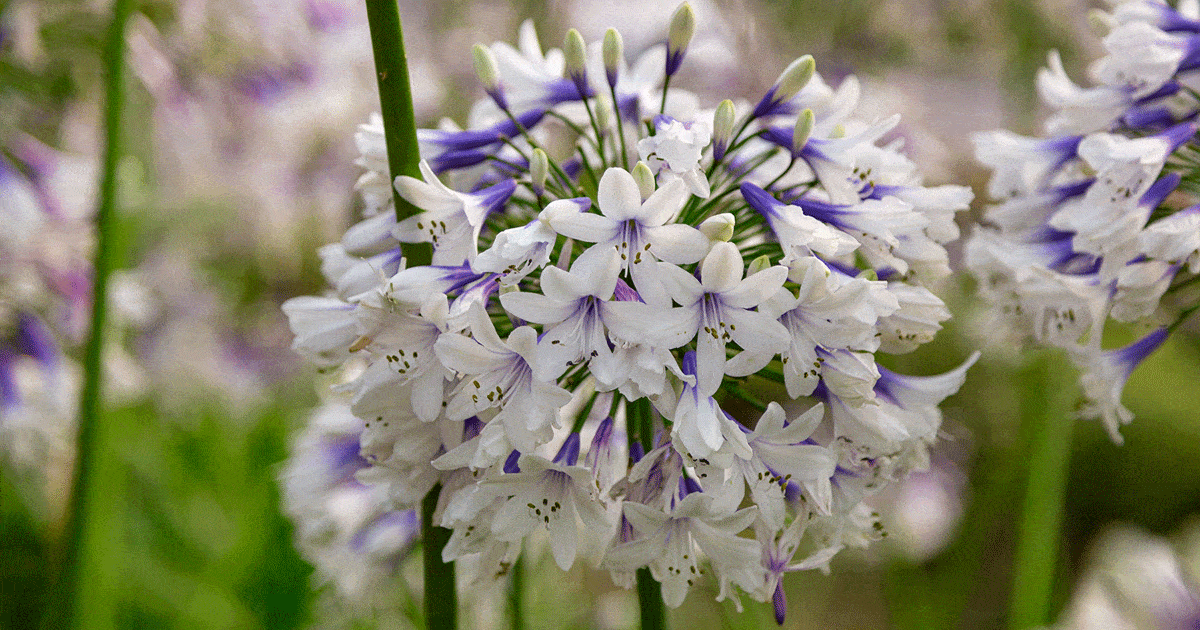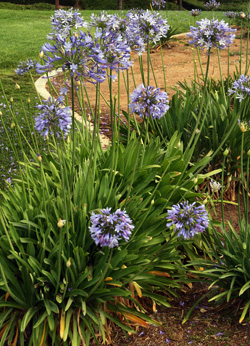Sensational Agapanthus: Enhancing Your Yard's Appeal
Sensational Agapanthus: Enhancing Your Yard's Appeal
Blog Article
Releasing the Secret to Successful Agapanthus Cultivation: Advice for a Flourishing Yard
In the world of gardening, growing agapanthus effectively needs a calculated approach that incorporates different facets of plant treatment. By comprehending the subtleties of agapanthus cultivation, one can develop an environment where these plants prosper and grow abundantly.
Growing Agapanthus: Ideal Practices
When planting Agapanthus, appropriate dirt preparation is important for making certain effective development and advancement of these beautiful blossoms. Agapanthus, commonly called Lily of the Nile or African lily, flourishes in well-draining dirt with a somewhat acidic to neutral pH degree - Agapanthus. Before planting, it is critical to amend heavy clay dirts with natural issue such as compost or peat moss to boost drain and give important nutrients for the plants
To plant Agapanthus, select an area that gets complete sunlight to partial shade, as this will advertise healthy and balanced development and bountiful blooming. Dig a hole twice the diameter of the plant's root round and position the Agapanthus at the very same deepness it was formerly expanding. Delicately backfill the opening with dirt, pushing down strongly to eliminate any type of air pockets around the roots.
Water the recently grown Agapanthus completely and remain to maintain the soil uniformly damp, particularly throughout the plant's active growing season. Agapanthus. Using a balanced plant food once a month can additionally sustain the plant's growth and flowering. By following these best practices for growing Agapanthus, you can create a spectacular display of these exciting blossoms in your garden
Ideal Dirt Issues for Agapanthus
For optimal development and blooming success of Agapanthus plants, making certain the soil problems are perfect is crucial. Agapanthus favors soil that is abundant in nutrients, so integrating a well balanced fertilizer throughout the growing period can promote healthy development and dynamic blossoms.

Watering and Fertilizing Tips
To make sure healthy growth and vivid blossoms, appropriate watering and fertilizing methods are vital for successful Agapanthus cultivation. Agapanthus plants profit from routine watering, especially throughout the growing season.
When it involves feeding Agapanthus, a balanced plant food with equivalent components nitrogen, phosphorus, and potassium can be applied in the springtime to advertise healthy development and blooming. Slow-release fertilizers are excellent for supplying nutrients gradually over an extensive period. Avoid over-fertilizing, as this can cause excessive vegetation growth at the expenditure of flowers.
In addition, incorporating organic issue like compost into the soil can boost nutrient levels and improve dirt structure, helping in the total health of the Agapanthus plants. By adhering to these watering and fertilizing pointers, gardeners can ensure their Agapanthus plants prosper and generate stunning display screens of blossoms.
Pruning and Deadheading Techniques
Appropriate trimming and deadheading strategies play a vital function in keeping the health and wellness and aesthetics of Agapanthus plants, matching the crucial methods of watering and fertilizing for successful growing. Trimming Agapanthus entails removing spent blossom heads, dead or yellowing leaves, and general shaping of the plant to advertise better growth. Deadheading, the process of getting rid of discolored flowers, not only improves the plant's look yet also motivates additional flowering.
When deadheading Agapanthus, it is recommended to trim off the blossom stem at the base utilizing sharp, tidy shears. This procedure reroutes the plant's energy from seed production back into root and foliage growth, promoting a healthier and more robust plant. Routine deadheading can prolong the flowering duration of Agapanthus and protect against self-seeding, which can lead to overcrowding.
In terms of pruning, Agapanthus typically advantages from a light trim after blossoming to clean up the plant and motivate fresh development. Cutting back the spent flower stems and removing any dead or damaged vegetation aids maintain the plant's vigor and total look. Nonetheless, it is important to stay clear of reducing into the crown of the plant, as this can compromise its wellness.

Protecting Agapanthus From Pests and Diseases
Carrying out effective bug and disease administration strategies is vital to protecting the wellness and vitality of Agapanthus plants in growing. One usual insect that influences Agapanthus is the Agapanthus borer, a caterpillar that tunnels into the plant, creating damage to the flowers and leaves.
Along with pests, Agapanthus are prone to diseases such as root rot and fungal fallen leave places. These issues can commonly be prevented by making sure correct drainage and preventing overwatering. Affected parts of the plant ought to be immediately gotten rid of to prevent further spread if signs of illness show up. Fungicides might additionally be made use of as a therapy action, adhering to the supplier's instructions carefully. By staying alert and attending to bug and condition concerns without delay, garden enthusiasts can assist their Agapanthus grow and flourish.

Conclusion
Finally, successful farming of agapanthus needs proper planting methods, ideal soil problems, adequate watering and More Help feeding, normal pruning and deadheading, and defense from insects and diseases. By adhering to these techniques and ideas, gardeners can guarantee a prospering yard full of lovely agapanthus blooms. Agapanthus. Remember to preserve helpful hints constant treatment and attention to information to advertise the health and durability of these stunning plants
When planting Agapanthus, appropriate dirt preparation is necessary for ensuring successful growth and advancement of these attractive flowers.Water the recently grown Agapanthus thoroughly and continue to maintain the dirt evenly moist, particularly during the plant's active growing season.For ideal development and growing useful site success of Agapanthus plants, guaranteeing the dirt conditions are suitable is essential. When growing or transplanting Agapanthus, ensure the dirt is well-prepared to give the necessary foundation for the plants to establish themselves efficiently. One typical parasite that influences Agapanthus is the Agapanthus borer, a caterpillar that tunnels into the plant, triggering damage to the blossoms and fallen leaves.
Report this page